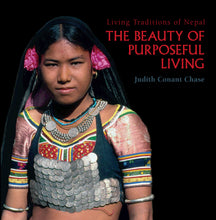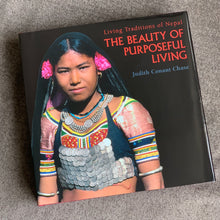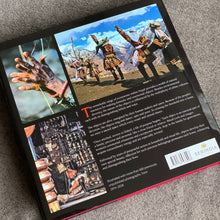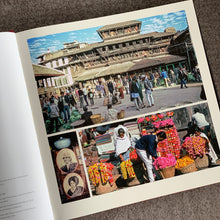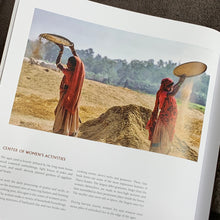
The remarkable range of ecosystems within NEPAL provides a wealth of natural resources for making domestic and ceremonial objects. Besides environmental diversity, the nature of the objects is influenced by the multiplicity of ethnic cultures, each with its distinguishing beliefs and ways.
The objects are alive, energized by their human makers and users. Because of the people's devotion, the objects sing and dance, spin and pour. In crossing the threshold into a home, we enter a sacred space which every vessel and utensil shares.
"Once stitched, woven or linked, a life of purpose begins." Each object is an essential part of a family, precious and personal, like a close friend or relative. Ritual tools and images, women s ceremonial ornaments and exceptional vessels, kept in the family for generations, acquire extraordinary energy and are especially revered.
Enlivened by years of purposeful action in household and ritual life, objects develop their own special beauty. Affection for such precious belongings permeates each home, enhancing and distinguishing their lives.
NEPAL's astonishing range of land and ecosystems stretches from near sea level in the Terai to the highest point on earth along the Tibetan border.
The Terai lowlands along the border with India is home to the indigenous Tharu people as well as Maithili and other cultural groups with larger populations in India. Tropical jungles and grasslands provide most of their creative material needs.
From the Terai, majestic ridges - like great flying buttresses - stretch north to the world s highest peaks encompassing a wild maze of side walls and drainages, knolls and hillocks, mounds and hummocks, lips and folds ... the middle hills. The canyons provide nettle fibers and the forests provide rock, bamboo and forest hardwoods for sturdy homes.
Tibetan-cultural Buddhist villages live on open slopes below the world s highest peaks. The land provides vast grazing grounds for yaks, sheep and goats that provide wools and fibers for their thick handsome coats and shawls.
The Kathmandu Valley is unique both environmentally and culturally, enclosing the homeland of the Newar people known for their rich artistic creativity in carved wooden architecture, paubha-thangka painting, cast metal sculpture and repousse metal temple facades.
Illustrated with more than 600 previously unpublished photographs from 1974–2018
- Hardcover: 440 pages, more than 600 color illustrations
- Publisher: Serindia Publications (July, 2019)
- ISBN: 978-1932476-90-3
- Size: 26.5 x 26.5 cm





